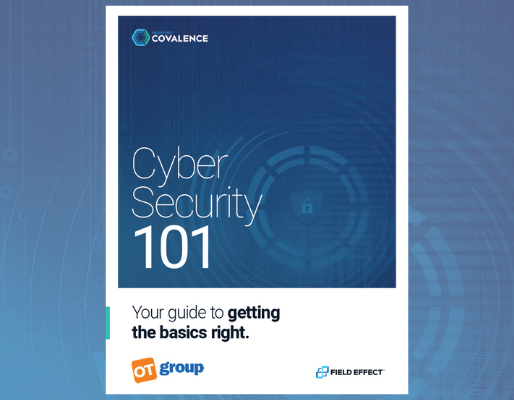Cybersecurity is more important than ever before, with small and medium-sized businesses saving thousands of files, making payments and accessing various software platforms and accounts every single day.
To ensure your business is properly protected from the risks of cybercrime, it’s crucial that your company’s network is able to withstand a range of attacks.
In this blog, we are going to be focusing on a specific type of cybercrime - brute force attacks. We will take a look at what they are, how your business can recognize when they are a threat to your network, as well as some fairly simple steps to help you prevent brute force attacks from impacting your business.
If you would like to learn more about cybercrime and how to protect your business, please read our Complete Guide to Cybersecurity for Small Businesses in Ontario.
What is a brute force attack?
A brute force attack is a form of hacking that uses trial-and-error to guess login information, encryption keys and other sensitive access points into a company’s network. These hackers essentially try millions of possible passwords until they guess correctly and gain entry.
This type of attack would be near-impossible if tried by a human, since it would be an incredibly time-consuming and tedious task. However, hackers are now using scripts that run billions of combinations of numbers, letters and symbols continuously until they crack the password.
Once they have gained access to your network, some of the most common goals of a brute force attack hacker are to:
- Steal sensitive information.
- Use your credential for credential stuffing (which we explain later in this blog).
- Compromise your website.
- Harvesting your credential to sell to third parties.
- Posing as your company to send phishing links or spread fake content.
- Redirecting your domains to websites holding malicious content.
In some cases, brute force attacks can be used in a positive manner to test your company’s network security. Many cybersecurity IT specialists will use a brute force attack to analyze how strong the encryption is on a company’s network.
The most common types of brute force attacks
There are four main types of brute force attacks, which use various approaches in a bid to crack your company’s passwords and breach your network for malicious activity. Here are the four types of brute force attack:
Dictionary attack: The most basic form of brute force attack, in which a hacker will pick a target and then run through possible passwords using a dictionary of the most common passwords.
Reverse brute force: Rather than target a specific username, reverse brute force attacks start with common passwords and then go through a list of possible usernames. The most common passwords are still incredibly insecure, with the top three passwords used in 2020 being 123456, 123456789, and picture1.
Hybrid brute force: This is a combination of both the above two brute force attacks. This tactic typically combines the most common passwords with random characters in a bid to gain access to a company’s accounts.
Credential stuffing: Once a username and password is known by a hacker, they will then use this information to gain access to multiple websites and network resources. It’s believed that almost two-thirds of people use the same password across multiple accounts.
How can your company recognize a brute force attack?
The most effective way to recognize whether your business is under threat from a brute force attack is by either looking for multiple failed login attempts from the same IP address or an increase in load on your server from an influx of post requests to your website.
To ensure your business is protected, you should look for a cybersecurity solution specifically designed for small and medium-sized businesses that monitors your company’s network and detects vulnerabilities in real-time.
How to prevent a brute force attack on your business
To enhance your cybersecurity solution, there are a few other methods that you can implement into your organization to protect your business from brute force attacks. Here are some of the top things you can do:
Maintain good password hygiene
Unless encouraged, it’s unlikely that your company’s employees will ever change their passwords. This makes it far easier for brute force hackers to gain access to your accounts and network. Make it a part of your cybersecurity policy that employees change their password every 60 to 90 days, using a range of upper and lowercase letters, numbers and symbols.
Use multi-factor authentication (MFA)
To add an additional layer of security against brute force attacks, we recommend using multi-factor authentication. This adds an extra step to the login process, sending a notification to a user’s phone to confirm their identity before allowing the user to access their account.
Enable a limited number of failed login attempts to your accounts
Brute force attacks rely on continuously guessing your password over and over again until they eventually gain access. By restricting the number of failed login attempts to your accounts, you’ll make it significantly more difficult, and time-consuming, for a hacker to guess your password.
Training your employees on cybersecurity protocol
Design a cybersecurity handbook and train your employees on the cybersecurity best practices that will secure your business. Your employees are the first line of defence against cybersecurity. Any mistakes they could lead to a vulnerability in your organization’s network that hackers can take advantage of.
Want to learn more about preventing brute force attacks, or simply have any questions about building a robust cybersecurity strategy? Contact OT Group today. Our team of IT, technology and cybersecurity experts would love to help.


.png)

